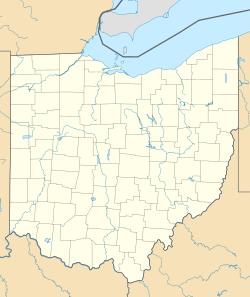
Crawford County is a county in the Commonwealth of Pennsylvania. As of the 2020 census, the population was 83,938. Its county seat is Meadville. The county was created on March 12, 1800, from part of Allegheny County and named for Colonel William Crawford. The county is part of the Northwest Pennsylvania region of the state.

Conneaut is the northeastern most city in Ashtabula County, Ohio, United States, as well as the entire state as a whole. Located in the Cleveland metropolitan area, it is settled along Lake Erie at the mouth of Conneaut Creek 66 miles (106 km) northeast of Cleveland. The population was 12,318 at the 2020 census.

Conneaut Township is a township in Erie County, Pennsylvania, United States. The population was 4,190 at the 2020 census, down from 4,290 at the 2010 census, up from 3,908 in 2000.
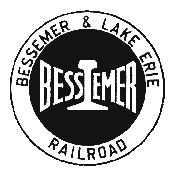
The Bessemer and Lake Erie Railroad was a class II railroad that operates in northwestern Pennsylvania and northeastern Ohio.
Cummins is a manufacturer of diesel and natural gas engines.

The Pennsylvania Canal, sometimes known as the Pennsylvania Canal system, was a complex system of transportation infrastructure improvements, including canals, dams, locks, tow paths, aqueducts, and viaducts. The canal was constructed and assembled over several decades beginning in 1824, the year of the first enabling act and budget items.
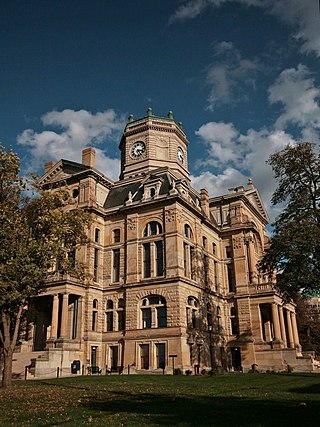
The Butler County Courthouse is located in Hamilton, Ohio and was constructed from 1885–1889 by architect David W. Gibbs. The courthouse is a registered historic building listed in the National Register on June 22, 1981.
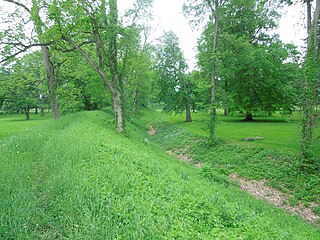
The Newark Earthworks in Newark and Heath, Ohio, consist of three sections of preserved earthworks: the Great Circle Earthworks, the Octagon Earthworks, and the Wright Earthworks. This complex, built by the Hopewell culture between 100 BCE and 400 CE, contains the largest earthen enclosures in the world, and was about 3,000 acres (1,200 ha) in total extent. Less than 10 percent of the total site has been preserved since European-American settlement; this area contains a total of 206 acres (83 ha). Newark's Octagon and Great Circle Earthworks are managed by the Ohio History Connection. A designated National Historic Landmark, in 2006 the Newark Earthworks was also designated as the "official prehistoric monument of the State of Ohio."

The Octagon House is a historic house located at 276 Linden Street in Fond du Lac, Wisconsin, USA. It was listed on the National Register of Historic Places in 1972. Along with the Wallace-Jagdfeld Octagon House, it is one of two Octagon Houses in Fond du Lac. The house was featured as the second-most haunted house in Wisconsin on the History Channel show "Hidden Passages".

The Clarence Darrow Octagon House is a historic octagon house in the community of Kinsman, Ohio, United States. Home to lawyer Clarence Darrow in his childhood, it has been named a historic site.

The Octagon is a historic octagon house on the campus of Heidelberg University in Tiffin, Ohio, United States. Built in the mid-19th century, it has been used for residential purposes throughout its history, and while it has experienced over a century of gradual deterioration, it has been named a historic site, and the 21st century has seen plans to restore it to its original integrity.
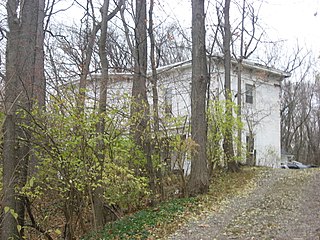
The Charles Butler House is a historic octagon house in the city of Franklin, Ohio, United States. Constructed during the middle of the nineteenth century, it was originally home to one of the city's most prominent men, and it has been named a historic site due to its unusual design.

The Gregg-Crites house, also known as the M. M. Crites house, is an octagon house located in Circleville, Ohio, on Route 23 just south of town. It was built by George Gregg between 1855 and 1856 and now owned by The Roundtown Conservancy. It was listed on the National Register of Historic Places in 2021.
Cummins House may refer to:
The David Stitt Mound is a Native American mound near Chillicothe in Ross County, Ohio, United States. Located on elevated land at a significant distance from the Scioto River, the mound is built in a sub-conical shape; it is 19.4 feet (5.9 m) high and has a diameter of approximately 130 feet (40 m).

Elm Hill, also known as the Campbell-Bloch House, is a historic house and national historic district located near Wheeling, Ohio County, West Virginia. The district includes two contributing buildings and one contributing site. The main house was built about 1850, and is a 2+1⁄2-story, brick house with a low 2-story wing in the Greek Revival style. It has an L-shaped plan, a 3-bay entrance portico, and hipped roof with an octagonal bell-cast central cupola. The interior has a central formal hall plan. Also on the property are a contributing brick, spring house / smoke house and a small cemetery dating to about 1835.
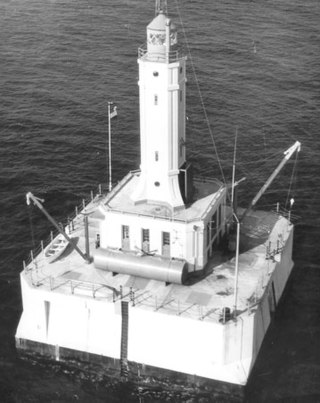
The Minneapolis Shoal Light Station is a light house located in northern Green Bay, 6.6 miles (10.6 km) south of Peninsula Point near Big Bay de Noc, Michigan. It was listed on the National Register of Historic Places in 2006.

Conneaut is a former New York Central train station in the U.S. town of Conneaut, Ohio. It was built in 1900 by the Lake Shore and Michigan Southern as a replacement for an older wooden depot, then acquired by the New York Central Railroad in 1914, along with the rest of the LS&MS. The passenger depot building has housed the Conneaut Historical Railroad Museum since 1964, and has a display track with the Nickel Plate Road #755 Berkshire steam engine. The station has been registered as the Lake Shore And Michigan Southern Passenger Depot on the National Register of Historic Places since March 27, 1975. The freight house connected to the station is operated by the Conneaut Area Historical Society.
Whittlesey culture is an archaeological designation for a Native American people, who lived in northeastern Ohio during the Late Precontact and Early Contact period between A.D. 1000 to 1640. By 1500, they flourished as an agrarian society that grew maize, beans, and squash. After European contact, their population decreased due to disease, malnutrition, and warfare. There was a period of long, cold winters that would have impacted their success cultivating food from about 1500.

